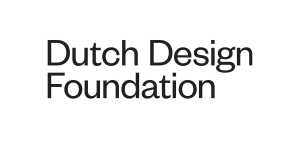We spent one third of our life sleeping. And can’t do without: all living creatures need sleep in order to stay alive and functional when awake. That’s a physical fact. In todays hectic society though, sleeping is not the most popular occupation of our time. So we tend to not make a big deal of it. That’s why most peoples living room looks absolutely more attractive then their bedroom. But when you think about the big amount of time we lay in our beds (or wherever you choose to sleep), that doesn’t make sense. You’d expect people to put some more effort to make it as comfortable and efficient as possible. The balance between time spent on sleep and time spent on sleep-innovation isn’t very well balanced.
Innovation in the domain of sleep is a growing topic, but small when compared to the innovation power that is delivered for domains like for instance sports, furniture or food production. Besides comfortable pyjamas, a wake up light producing bird sounds and a smart alarm, design research in this field is still a niche. Missed chance, since a good nights sleep is the best recipe for having a good time during the day. The aim of this co-design session is to change that and think together with designers about the future of sleeping.
Hästens
One of the companies that probably spend more time thinking about sleeping then actually being asleep is Hästens. You probably know this Swedish company from their high-quality blue and white checked beds. Since 1852, for six generations long now, they produce these beds by hand, using all natural materials like horsehair and wool. When it comes down to manufacturing the beds, Hästens stick to their traditions. But the company wouldn’t have survived this long if it weren’t for their pioneer mind. That’s why they would like to challenge designers to think with them how to positively reimagine everything around the bed. Because even Hästens admits that - although it can be an important factor - sleeping well involves more then just a good matrass.
The future of sleep
The question is: how could we more consciously influence our sleep? Should we alter our sleeping environment, our sleeping habits, the hard- and software we use for sleeping? Some might say the future lies with the quantified self, monitoring the data that we get from our own body. Could we sleep more successful if we would use these data? Or is the innovation to be sought in the technological but in the psychological field? A daily dose of mindfulness might prove to be more effective to bring our brainwaves to rest.
And let’s not forget that the daily need for sleep varies from person to person and depends on many factors, such as age, general condition, occupations, mood and sleeping habits. Not to think about factors as seasons, family situation, job, dreams. Every night of every person is unique. So design research in the field of sleep could also be framed to provide people with a more individual sleeping advice.
Themes
To provide a bit more grip for this What if Lab, three themes will be addressed:
Surroundings by Kiki van Eijk
As already stated: most people tend to spend a little more attention (and money) on their living room then their bedroom. But also already stated: we spend a lot of our time there. So how do the surroundings in which we sleep, affect our sleep? Like some daylight in the office increases productivity, certain factors might contribute to sleeping better and dreaming nicer. Should we hand out feng shui guidelines for everybody who buys a new bed? Decorate the bedroom with certain colours and forms? Have a cosy snug as bedroom or a spacious modern affair?
Habits by Enrichers
What do we actually do before, during and after our sleep? Maybe we never developed the right rituals to maximize the effects of our sleep. For instance: is your bedroom totally free of television/laptop/tablet/smartphone? Several researches have proven that watching a flickering screen just before going to sleep isn’t helping. But we don’t switch our devices off; instead new apps have been developed to make your screen less bright in the evening, so your body can still enter sleep mode. And what do we do when we can’t sleep? Did evolution bring us beyond counting sheep, reading books or having sex yet? And what if there is a person lying next to you? Is sleep something individual or should we address is as a more communal activity?
Senses by Laura Lynn Jansen & Justine Kontou
Sleep is something that affects our whole body and involves all our senses. When you are still a kid, these senses are addressed by the occasional cup of hot milk before bedtime, a teddy bear to cuddle with and maybe even somebody would read you a bedtime story. All that is left for grown-ups is a bit to prevent you from snoring and if that’s not working some earplugs to prevent you from hearing the snoring. Do we need different tools for sleeping? Can a temperature, patterns, sound or smell in the bedrooms make us feel more safe, relaxed or intimate?
Criteria
The goal of this co-designsession is to provide Hästens with new concepts regarding the future of sleep. We do ask for a visualisation in some form, but it doesn’t have to be a working prototype. Therefore the outcome may be quite abstract, speculative, futuristic, innovative, experimental and fun. However, there are a few guidelines concerning this assignment:
- Hästens is not looking for designers to technically improve their beds. In fact, the natural materials used and the traditional way these beds are produced is their most important trademark;
- Also the blue and white checked pattern is a very important part of their visual identity, and cherished so by Hästens;
- Hästens is very open minded though about everything that goes outside the bed itself. In this What if Lab we’re looking for new points of view on sleeping and how the future of sleep can be reimagined.
Timeline
27 September kick-off masterclass
11 October individual update meetings with Hästens and DDF
22 October seminar ‘the future of sleep XX (during Dutch Design Week)
Conditions for participation
Please read the conditions for participation carefully, before signing up. By registering for this What if Lab, you automatically agree with the conditions as stated in the document you can find via THIS LINK.
How to sign up?
Registration for this What if Lab is closed.
Questions
If you have any questions regarding this What if Lab, please contact dries@dutchdesignfoundation.com or margriet@dutchdesignfoundation.com.










